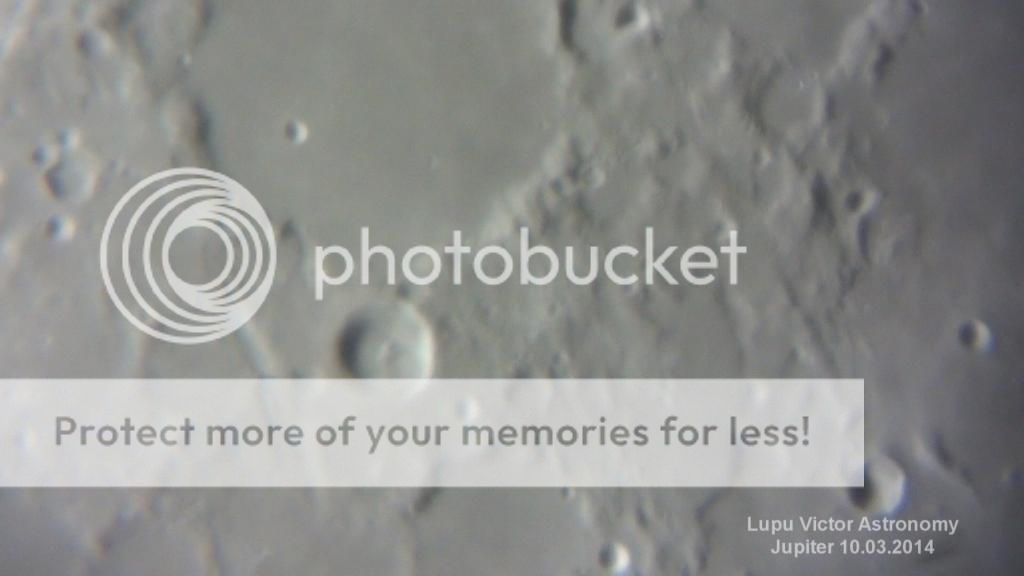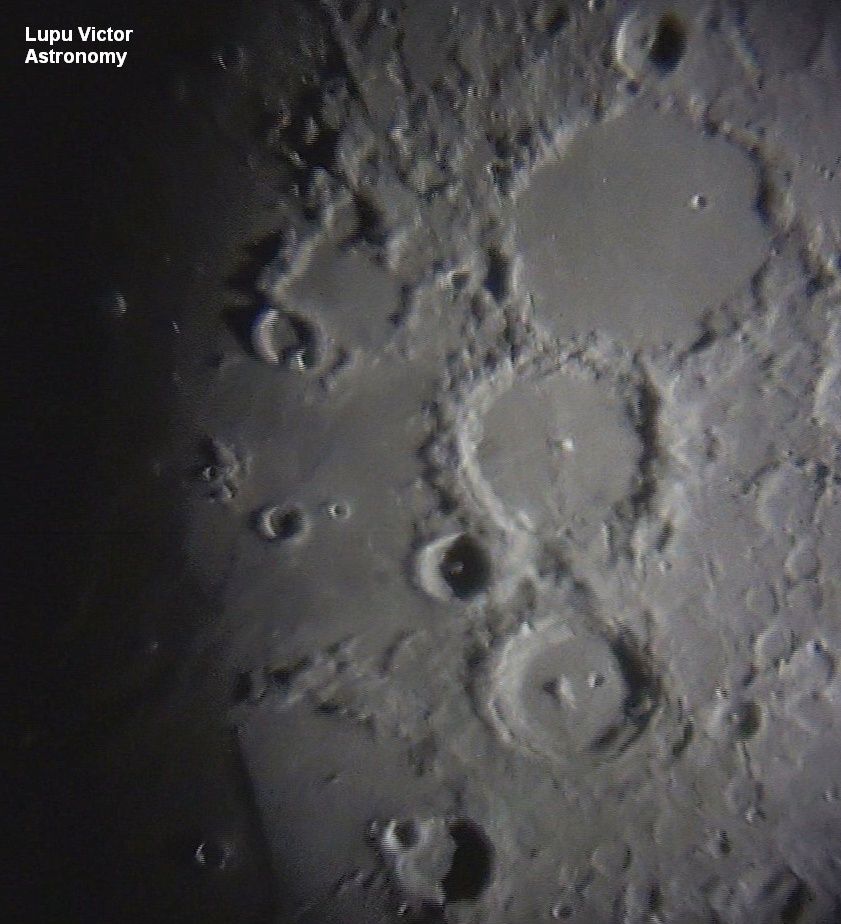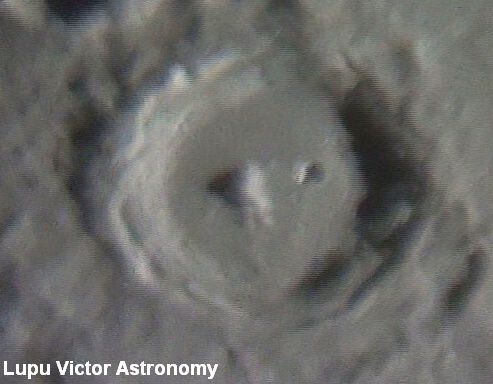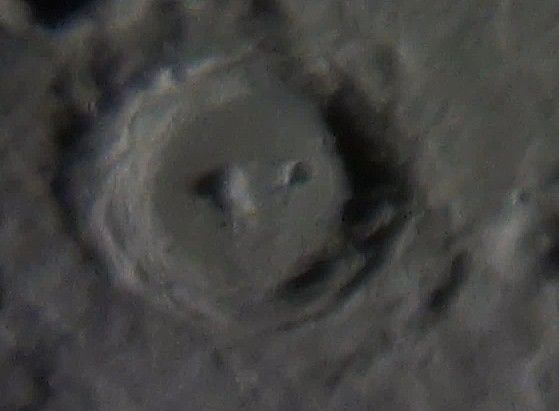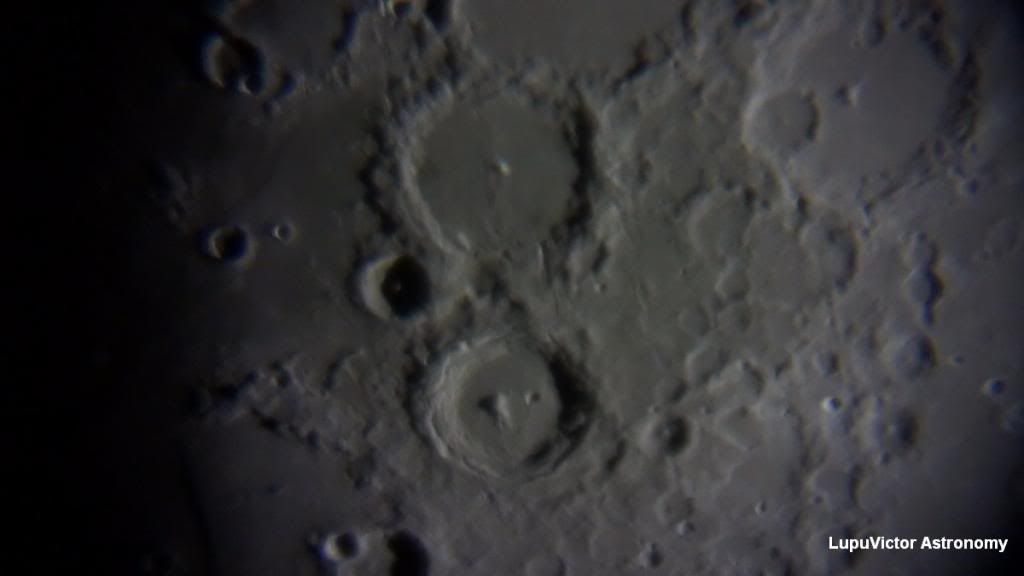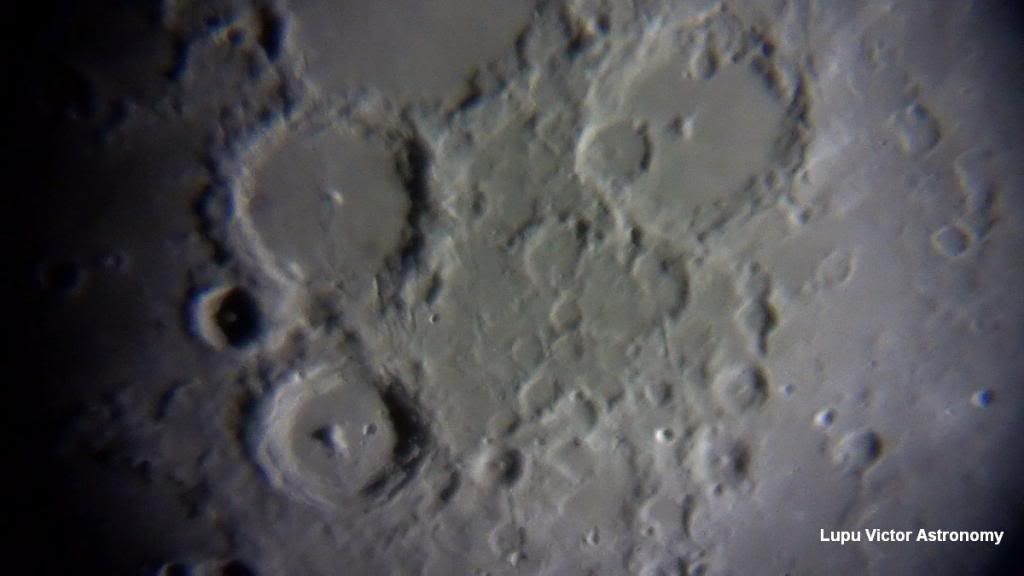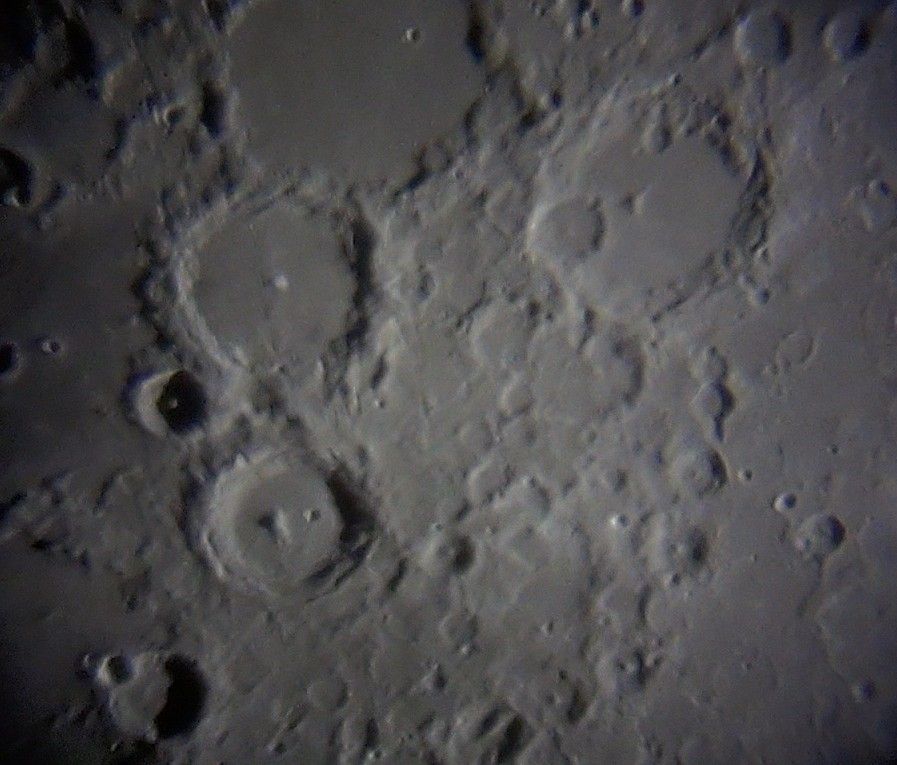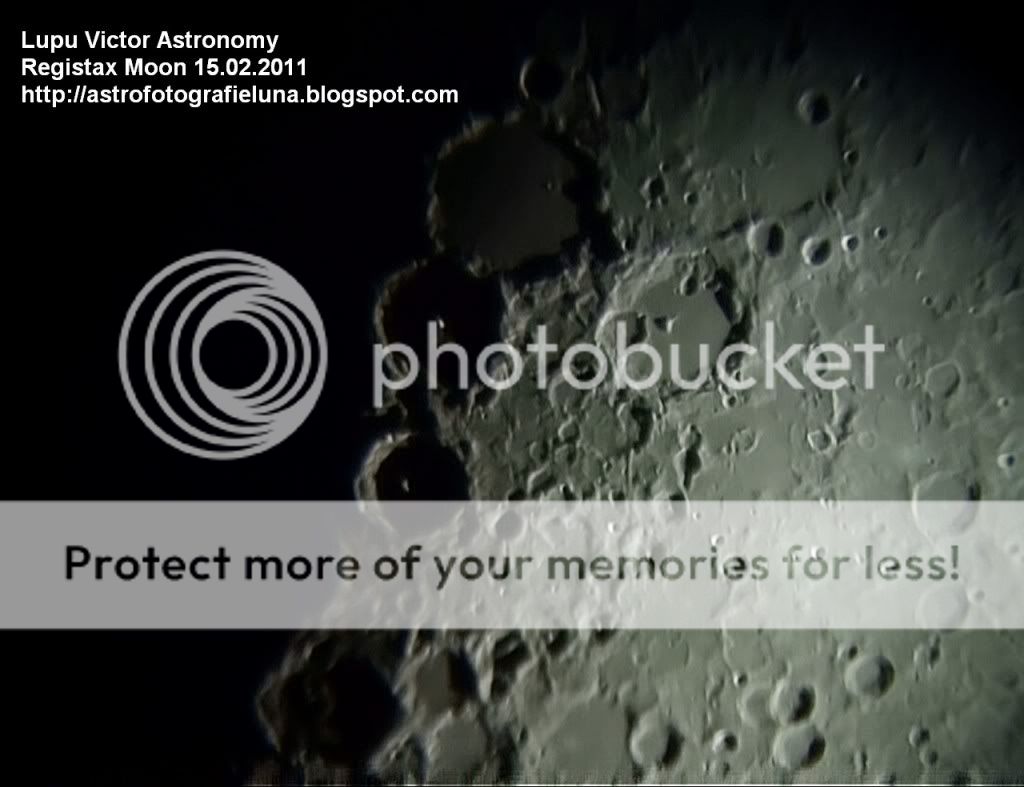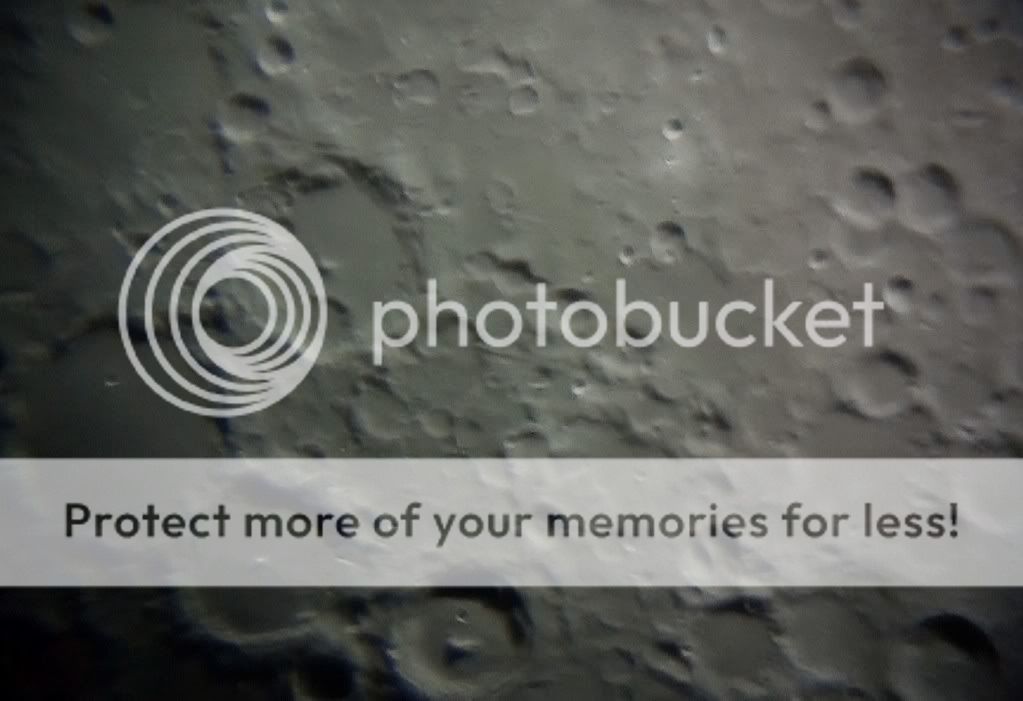Ptolemaeus crater (153 km) characteristics are shown when the Sun is at low angles. When full Moon crater contours become more difficult to discern.
The crater rim has a small height, with an irregular polygonal shape, although it is generally circular. The largest of the peaks is located along the edge, called Ptolemaeus Gamma (γ), which has an altitude of 2.9 km and is located in the northwest along the edge. Ptolemaeus has no central peak.
Ptolemaeus crater or Ptolemy, is a crater that has this name both on Mars and the Moon. As Ptolemaeus, Herschel (41 km) is a name that is put on a crater on Mars, and on the satellite Mimas of Saturn.
Moon Age: 9.05 days
Phase: 70.5% (0% = New, 100% = Full)
Distance: 399.221 km
Optics (telescope or lenses): Celestron C8-Newtonian telescope, eyepiece 20mm Plossl, 2x barlow
Mount: CG5 (EQ5)
Camera: Sony CX130
Filter: no
Date: 10/03/2014
Location: Baia Mare, Romania
Processing: Registax, FastStone Image Viewer
The crater rim has a small height, with an irregular polygonal shape, although it is generally circular. The largest of the peaks is located along the edge, called Ptolemaeus Gamma (γ), which has an altitude of 2.9 km and is located in the northwest along the edge. Ptolemaeus has no central peak.
Ptolemaeus crater or Ptolemy, is a crater that has this name both on Mars and the Moon. As Ptolemaeus, Herschel (41 km) is a name that is put on a crater on Mars, and on the satellite Mimas of Saturn.
 |
| 161 video frames, in Registax. |
 |
| 68 video frames, in Registax. |
 |
| 161 video frames, in Registax. |
| Coordinates | 9.2°S 1.8°W |
|---|---|
| Diameter | 153 km |
| Depth | 2.4 km |
| Colongitude | 3° at sunrise |
| Eponym | Claudius Ptolemaeus |
Moon Age: 9.05 days
Phase: 70.5% (0% = New, 100% = Full)
Distance: 399.221 km
Optics (telescope or lenses): Celestron C8-Newtonian telescope, eyepiece 20mm Plossl, 2x barlow
Mount: CG5 (EQ5)
Camera: Sony CX130
Filter: no
Date: 10/03/2014
Location: Baia Mare, Romania
Processing: Registax, FastStone Image Viewer








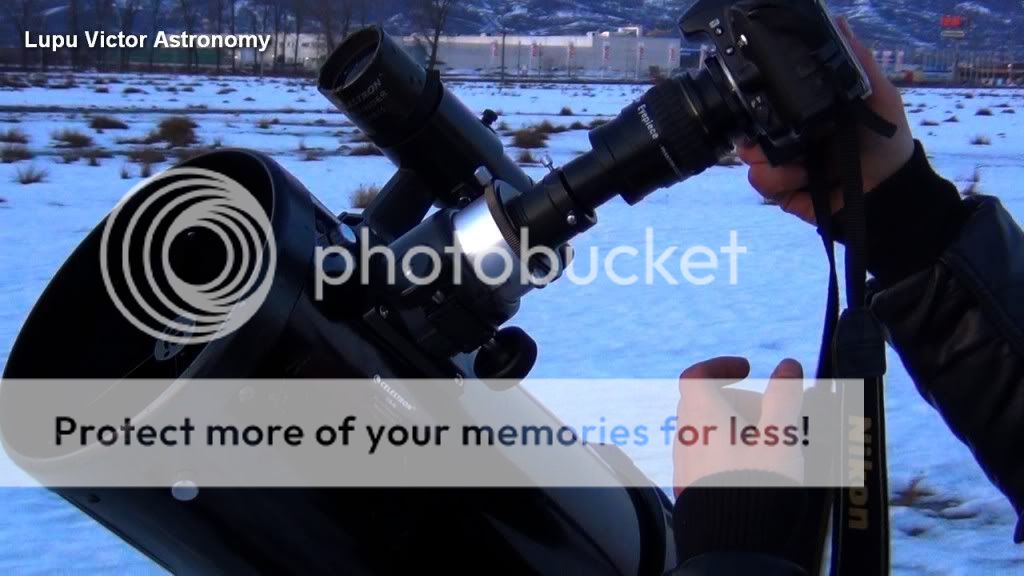

 Saturday, April 04, 2015
Saturday, April 04, 2015
 Unknown
Unknown



